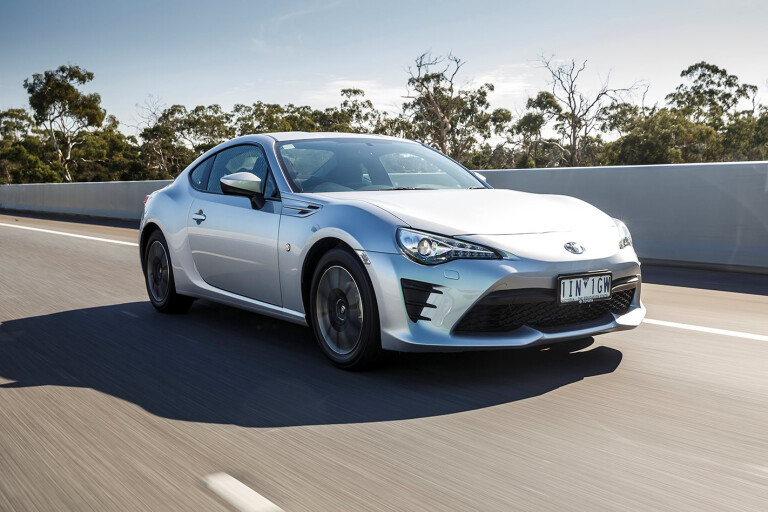
What is it?
The Toyota 86 was designed as a modern-day version of the classic Toyota AE86 from the 1980s and, seven years since its launch, it's still a hit with car enthusiasts seeking an affordable rear-wheel drive sports coupe.
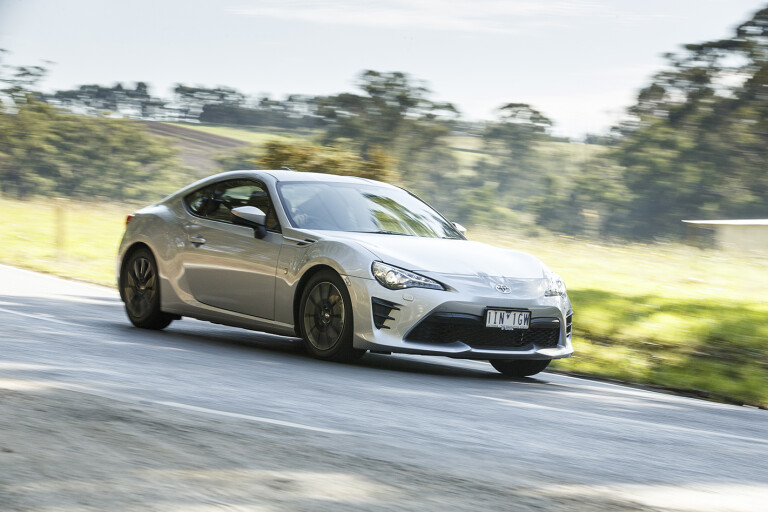
Toyota developed the 86 with Subaru, which sells the very similar BRZ, and such was the initial success of that partnership that both cars have only a received couple of relatively minor updates to styling and performance since 2012.
The latest for the 86 came in December 2016, which brought a mid-life restyle, retuned suspension, a minor power-boost and a shorter shift manual gearbox.

It’s been a while since we’ve driven an 86 so we wanted to see if it still holds up in 2019 under the shadow of the new Toyota Supra and Mazda's evergreen MX-5.
How much does the Toyota 86 GT manual cost?
Priced at $31,440, the six-speed manual GT is the cheapest variant in the 86 range.
It's arguably the best from a purist point of view, when compared with the six-speed automatic variant, and the GTS (from $36,640) versions that come with a factory approved performance package, featuring improved Brembo brakes, Sachs dampers, rear spoiler and bigger 17-inch alloy wheels.
Is the Toyota 86 GT manual easy to live with?
The Toyota 86 makes no pretences about being a practical or particularly comfortable car, but there are some things to consider such as the back seats, which are token at best, with virtually no legroom and very tight access.
The shallow boot space is a tight, but functional 223-litres that's about the same as a hatchback. The rear seat back folds forward in one piece to extend the length of the load space for anything that isn’t tall or bulky. Underneath the boot floor, the 86 has a full-sized spare wheel.

As a sports car it’s very easy to live with, if you're not tall. The sports front seats are firm but comfortable and feel like they’ve been moulded specifically for your back. You do have to sink down to get into them, and entry and egress can be even more difficult by not being able to fully open the long door in tight parking spots. Taller people will also find that the rear-view mirror is positioned low, which limits its functionality.
The 86’s diminutive size does help with parking though. Restricted rear vision is assisted by a reversing camera displayed in the 6.1-inch colour touchscreen – something you don’t get in the Mazda MX-5. Parking is also aided by the user-friendly short-shifting manual gearbox that doesn’t make low-speed manoeuvring a chore as is the case with some larger sports cars.
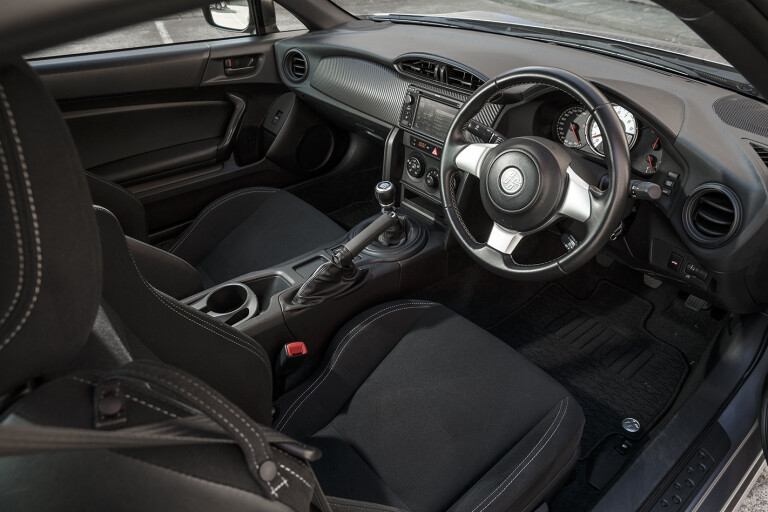
The dashboard design is elegant but simple with a clear gauge display and switches intuitively placed for easy reach. There are no audio buttons on the steering wheel, though the volume and touch-screen audio controls are close to hand. The cruise control settings are on a stalk behind the steering wheel.
With the manual gearbox the 86’s 2.0-litre engine has an official fuel consumption rating of 8.4-litres of RON 98 premium unleaded per 100kms, though driving it enthusiastically will usually push that to 10.0 litres/100km.
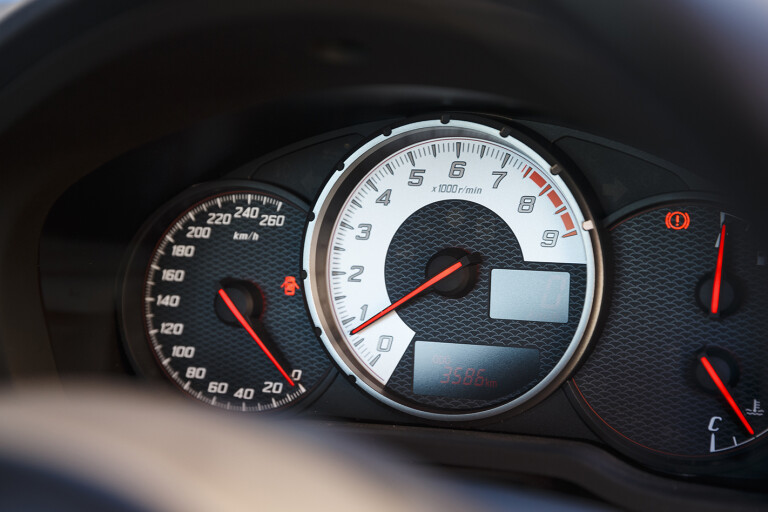
The Toyota 86 has a five-star ANCAP safety rating that was awarded in 2013 before its lack of autonomous emergency braking was taken into account.
Like all Toyotas, it is now covered by a five-year, unlimited kilometre warranty.
Does the Toyota 86 GT manual drive well?
This is why it exists! It’s not the most powerful sports car on the market but that doesn’t matter because the 86 is all about feeling connected to the road through the low seating position, slick gear shifts, revvy engine and precise steering.

Being down low provides an enhanced sensation of speed, meaning even just zipping through a roundabout can be plenty of fun.
The steering is so direct it’s almost telepathic, and the low centre of gravity, tight chassis and suspension with anti-roll bars combine to superbly handle corners. The ride is firm even on the smallish 16-inch rubber, and you feel every bump, but the back-hugging seats help absorb excessive jarring.
Throttle response is instant as are brake pedal inputs, which makes the 86 a very forgiving sports car should you find yourself entering a bend a little too hot.
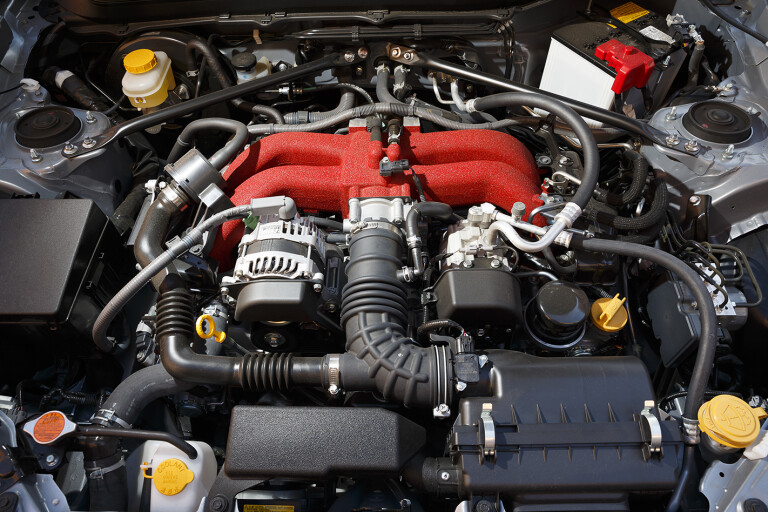
The 2.0-litre engine produces 152kW of power, which is quite a lot for its dainty 1234kg kerb weight, but you need to get the revs up to about 5500rpm to bring out peak responsiveness. It’s not as sharp in the middle-rev range, but that allows you to dial things down on your daily drive.
Verdict
Few cars offer such a pure driving experience for the cash. It's relatively tame to control and doesn’t produce a surplus of power, which makes the base Toyota 86 an excellent entry-level sports car, while still bringing a smile to the face of seasoned drivers.
Now in its seventh year, the interior trim and infotainment system are showing their age, but for less than $35,000, this is still one of the great new-sports car bargains.
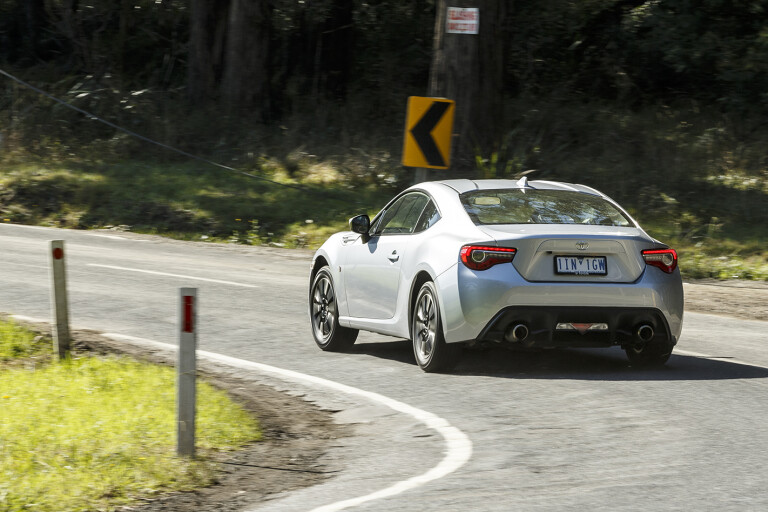

COMMENTS